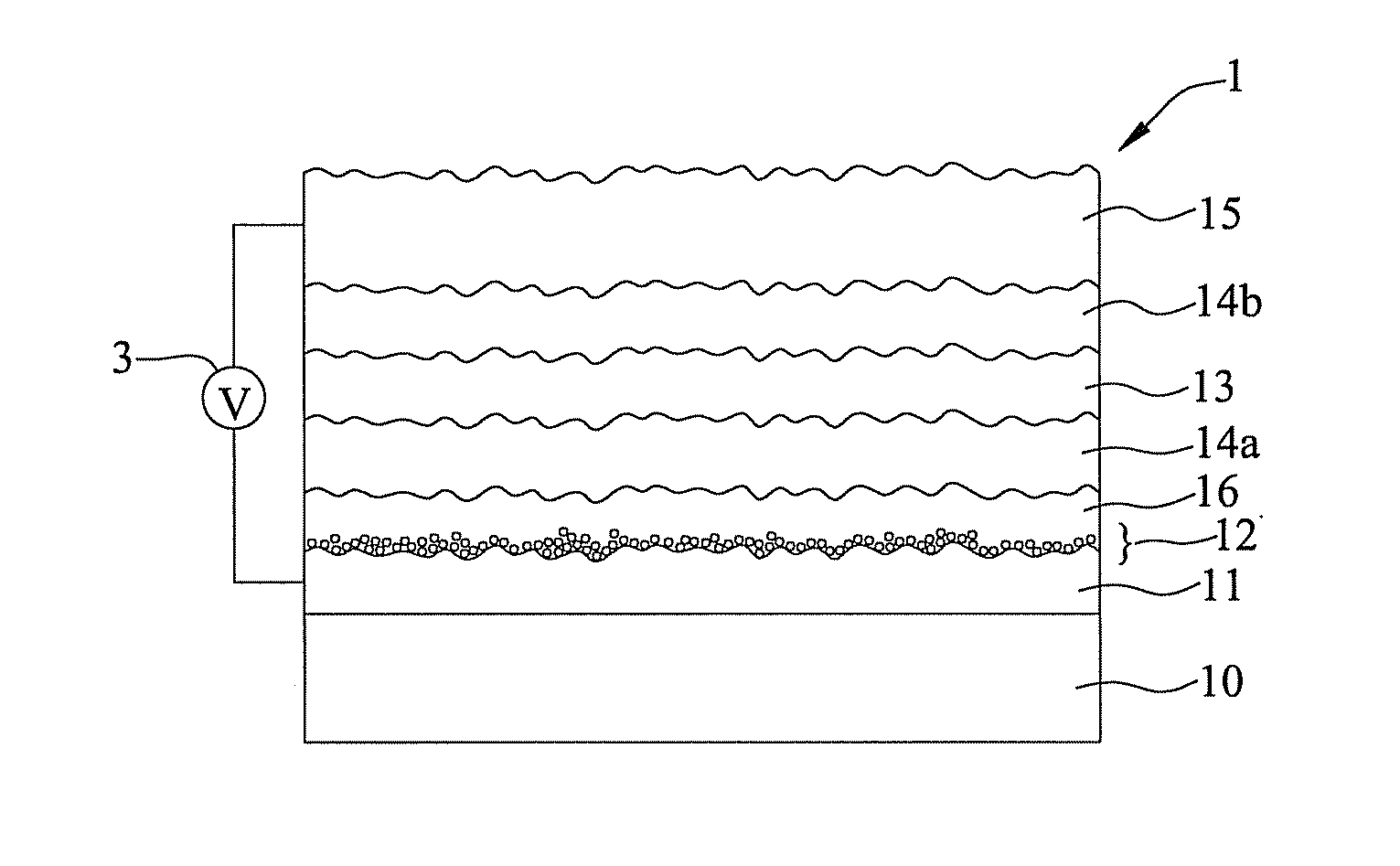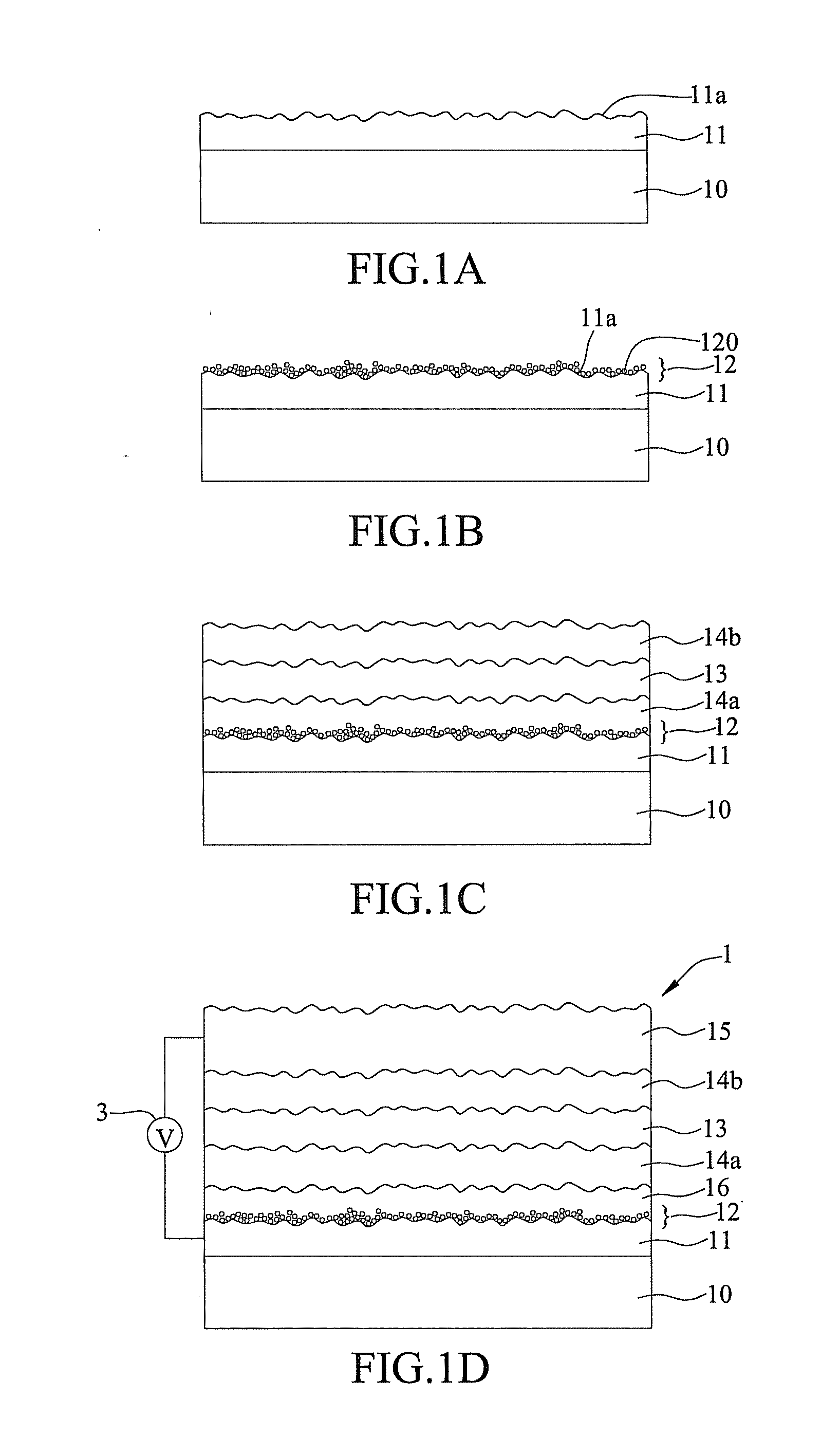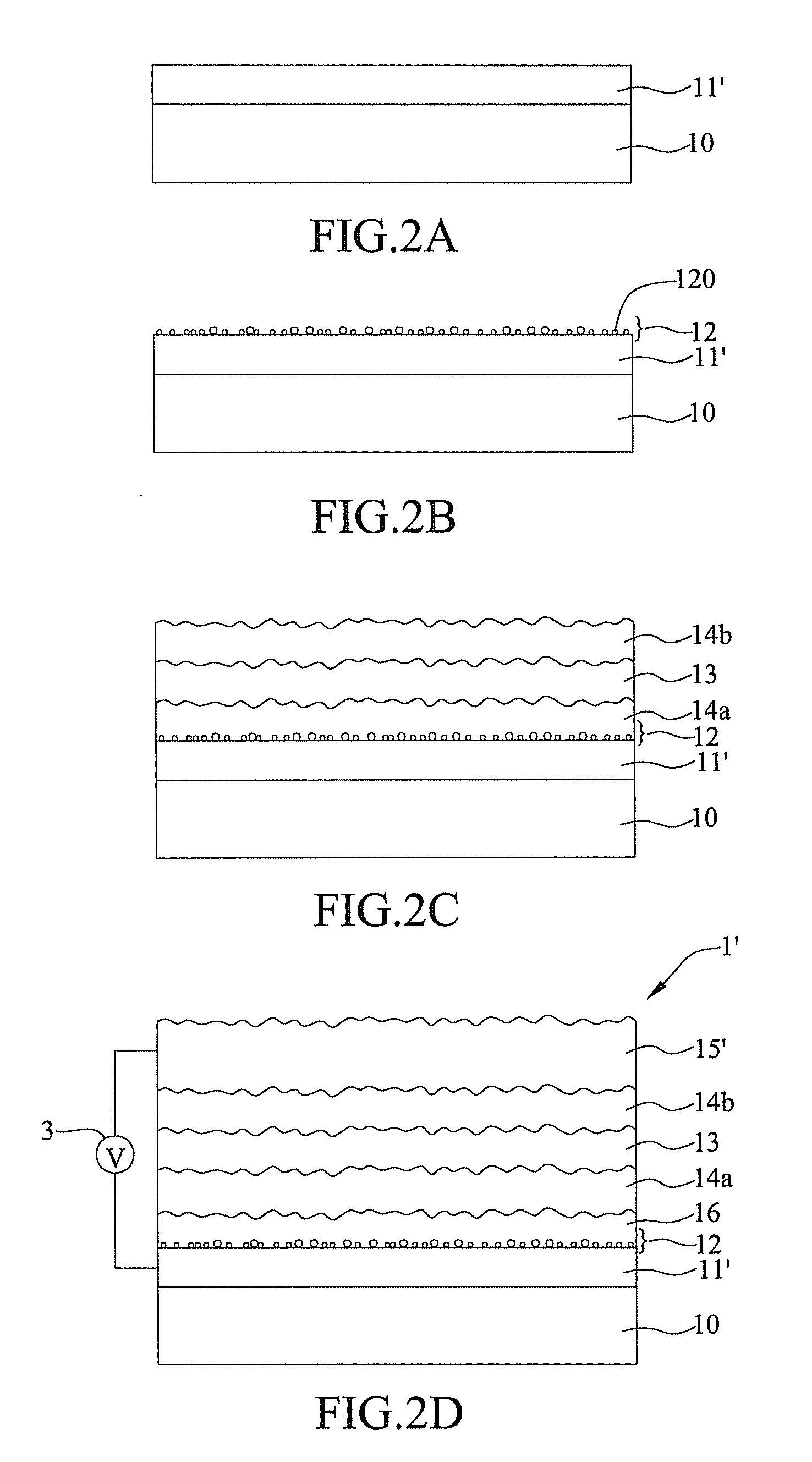Solar battery unit
- Summary
- Abstract
- Description
- Claims
- Application Information
AI Technical Summary
Benefits of technology
Problems solved by technology
Method used
Image
Examples
first embodiment
[0054]Referring to FIGS. 1A through 1D, there are shown schematic cross-sectional views of a method for fabricating a solar battery unit 1 in a first embodiment according to the present invention.
[0055]Referring to FIG. 1A, a first electrode 11 is provided, and the first electrode 11 is disposed on a substrate 10. The material of which the substrate 10 is made is a transparent material, paper, glass, a polymeric material, or a metallic material.
[0056]In this embodiment, the first electrode 11 is formed by applying a metallic material to the substrate 10, using sputtering, evaporation, spin coating, immersion, spraying, drying after dripping, organic metal chemical vapor deposition (MOCVD), electroplating, or a chemical reaction. The metallic material is Al, Au, Cu, Ag, Cr, Pt, Co, Ni, or Ti. In this embodiment, the material of which the first electrode 11 is made can also be a non-metallic material.
[0057]In this embodiment, the first electrode 11 has a convoluted surface 11a. The co...
second embodiment
[0066]Referring to FIGS. 2A through 2D, there are shown schematic cross-sectional views of the method for fabricating a solar battery unit 1′ in a second embodiment according to the present invention. The difference between the second embodiment and the first embodiment is that, in the second embodiment, the first electrode 11′ and the second electrode 15′ are made of different material.
[0067]Referring to FIG. 2A, the first electrode 11′ is provided, and the first electrode 11′ is disposed on the substrate 10. In this embodiment, the material of which the first electrode 11′ is made is a transparent material, and thus the substrate 10 is also made of a transparent material. The first electrode 11′ has a flat surface.
[0068]Referring to FIG. 2B, the nano rough layer 12 is formed on the first electrode 11′, and the nano rough layer 12 comprises a plurality of metallic nanoparticles 120 stacked up. The plurality of metallic nanoparticles 120 is stacked up by spin coating, immersion, spr...
third embodiment
[0073]Referring to FIGS. 3A through 3D, there are shown schematic cross-sectional views of the method for fabricating a solar battery unit 1″ in a third embodiment according to the present invention. The difference between the third embodiment and the second embodiment is that, in the third embodiment, a nano rough layer 12′ takes on a new structure.
[0074]Referring to FIG. 3A, the first electrode 11′ is provided, and the first electrode 11′ is disposed on the substrate 10. The material of which the first electrode 11′ and the substrate 10 are made is a transparent material.
[0075]Referring to FIG. 3B, the nano rough layer 12′ is formed on the first electrode 11′, and the nano rough layer 12′ comprises a metal membrane 121 and a plurality of metallic nanoparticles 120′ disposed on the first electrode 11′ and covered with the metal membrane 121.
[0076]There is no limitation on the material of which the metallic nanoparticles 120′ are made, though the material is preferably a transparent...
PUM
 Login to View More
Login to View More Abstract
Description
Claims
Application Information
 Login to View More
Login to View More - R&D
- Intellectual Property
- Life Sciences
- Materials
- Tech Scout
- Unparalleled Data Quality
- Higher Quality Content
- 60% Fewer Hallucinations
Browse by: Latest US Patents, China's latest patents, Technical Efficacy Thesaurus, Application Domain, Technology Topic, Popular Technical Reports.
© 2025 PatSnap. All rights reserved.Legal|Privacy policy|Modern Slavery Act Transparency Statement|Sitemap|About US| Contact US: help@patsnap.com



